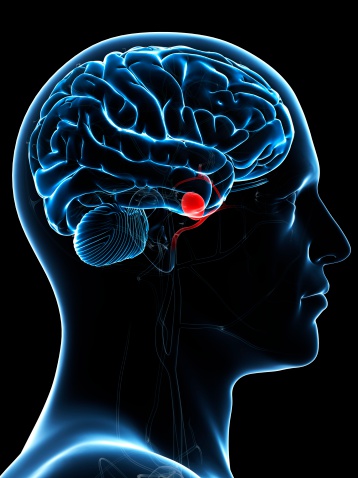Brain Aneurysm
At the OHSU Brain Institute, we offer the region’s most advanced care to diagnose,treat and monitor brain aneurysms. You’ll find:
- Team-based care from specialists including neurosurgeons, neurologists and neurointerventionalists.
- The latest neuroimaging, including the most advanced risk assessment of unruptured aneurysms.
- Experience with the most complicated cases.
- Advanced diagnosis and treatment options, including an embolization technique first used on the West Coast at OHSU.
- A high volume of patients and excellent outcomes.
- A surveillance clinic for skilled monitoring.
Understanding brain aneurysms
What is a brain aneurysm?
A brain aneurysm is a weak spot in a blood vessel that bulges and fills with blood. An aneurysm can leak or rupture, causing bleeding into the area around the brain (subarachnoid hemorrhage).
Other names: Brain aneurysms are also called cerebral aneurysms or intracranial aneurysms. If you have a ruptured aneurysm, your diagnosis will include subarachnoid hemorrhage, a type of stroke with bleeding into the space surrounding the brain.
What causes brain aneurysms?
Some people may be born with a weak spot that later develops into an aneurysm. People with arteriovenous malformations or inherited diseases such as connective tissue disorders and polycystic kidney disease may be at higher risk.
Other risk factors include:
- Head injury or trauma
- Atherosclerosis — fatty deposits inside brain arteries
- Smoking
- High blood pressure
- Cocaine use
Who gets brain aneurysms?
Aneurysms are more common in women and adults. About 3% of the population has an unruptured brain aneurysm. About 30,000 people a year in the U.S. have a ruptured aneurysm.
Signs and symptoms
Ruptured aneurysm
This is a medical emergency. If you have symptoms, call 911. Symptoms include:
- Severe headache: When an aneurysm leaks blood or bursts, the main symptom is a sudden terrible headache that people often say is the worst in their life.
- Nausea
- Vomiting
- Double vision
- Drooping eyelid
- Sensitivity to light
- Seizure
- Loss of consciousness
- Coma
Unruptured aneurysm
Small, unchanging aneurysms usually don’t have any signs or symptoms. A growing aneurysm might press on nerves or brain tissue and cause symptoms including:
- Dilated pupils
- Pain behind an eye
- Vision changes
- Facial weakness or paralysis
Screening
There is no routine screening for symptomless, unruptured aneurysms. They are sometimes detected in tests for something else.
At OHSU, patients with a history of aneurysm are routinely screened at our aneurysm surveillance clinic. Screening may be recommended for people with a strong family history of aneurysm or those with conditions that increase the risk of aneurysm.
Types of brain aneurysms

Doctors classify brain aneurysms by shape, size and location. These help show the risk of rupture so doctors can plan treatment.
- Shape: An aneurysm may look like a berry on a stem or a bulge that makes the blood vessel look like a spindle.
- Size: Aneurysms can range from a few millimeters across (smaller than a pencil eraser) to wider than a quarter.
- Location: Cerebral aneurysms can occur anywhere in the brain. Most are along arteries that run between the underside of the brain and the base of the skull.
Specific types include:
Saccular: This is the most common type and is usually found at the base of the brain. A sac of blood that looks like a berry is attached to an artery by a stem or neck. Saccular aneurysms can have a well-defined narrow neck or a wide neck.
Fusiform: The blood vessel bulges to form a spindle shape. These aneurysms can form because of plaque build up in the artery (atherosclerosis).
Dissecting aneurysm: This rare type is often caused by a head injury. It begins with a tear in the inner wall of the artery, which causes blood to leak between the other layers.
Learn more
- Diagnosis and treatment of brain aneurysms
- Cerebral Aneurysms Information Page, National Institute of Neurological Disorders and Stroke
- Cerebral Aneurysms Fact Sheet, National Institute of Neurological Disorders and Stroke
- Brain Aneurysm Foundation
For patients
- Call 911 now if you or someone else may be having a stroke. Learn the BE FAST signs of stroke.
- Referral: To become a patient, please ask your doctor for a referral.
- Questions: For questions or follow-up appointments, call 503-494-7772.
Location
Parking is free for patients and their visitors.
OHSU Stroke Program clinic
Hatfield Research Center, 13th floor
3250 S.W. Sam Jackson Park Road
Map and directions
Refer a patient
- Refer your patient to OHSU.
- Call 503-494-4567 to seek provider-to-provider advice.
- Find OHSU’s stroke practice standards on our For Health Care Professionals page.
Patient resources
- Find resources for patients and families.
- Learn about stroke prevention.
- Learn how our Telemedicine Network can bring OHSU expertise to your community.